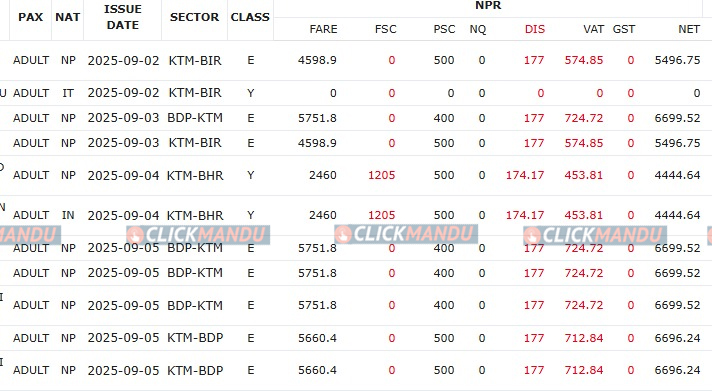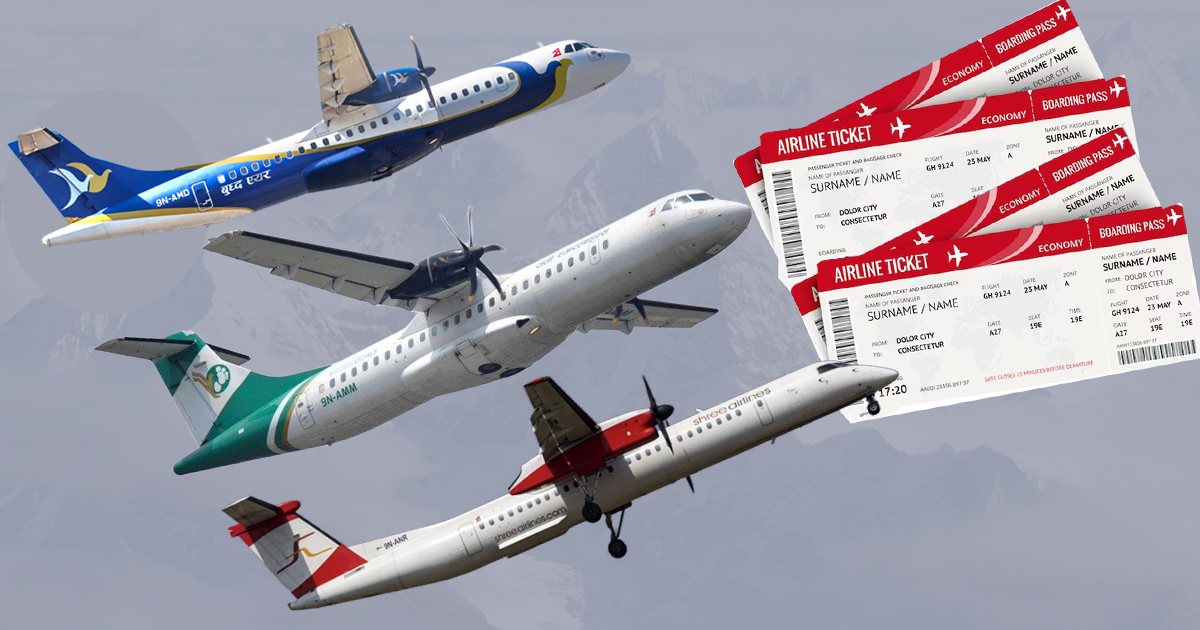Kathmandu: With the festive rush of Dashain, the outflow of passengers from Kathmandu has surged.
As repeated road blockages disrupt travel, crowds of people rushing to reach their destinations are highly visible at Tribhuvan International Airport (TIA).
Currently, the airport handles around 350 domestic flights daily. Nearly 18,000 passengers travel internally each day from TIA alone.
Domestic airlines are operating at full capacity to manage the influx. The heavy flight pressure has also created problems in the skies, with aircraft frequently held in air traffic delays.
Compared to normal times, the increased passenger load, higher flight numbers, and the need to maintain punctual service have posed serious challenges for TIA in managing air traffic.
Every Dashain, complaints surge about higher-than-usual fares on flights taken out of necessity, for urgent services, or due to travel obligations. Already struggling with living costs, ordinary Nepalis find expensive air tickets during Dashain a heavy financial burden.
The Airlines Operators’ Association has, however, declared that airlines will charge less than the maximum fares set by the Civil Aviation Authority of Nepal (CAAN). Airlines have also been urged to keep ticket prices below the ceiling in upcoming sales.
Airlines, meanwhile, argue that fares are higher during Dashain because passenger flow is mostly one-way. Yeti Airlines spokesperson Sudarshan Bartaula explained that although outbound flights from Kathmandu are packed, inbound flights return with many empty seats. “Every outbound flight is full, but no one cares about the vacant seats on return flights,” he said.
Airfare cannot exceed the ceiling set in the CAAN’s “Airfare Regulation Directive 2016.” The directive sets a minimum, base, and maximum rate. Airlines add fuel surcharges, passenger service charges, and 13 percent VAT to these rates to determine the total ticket price.
The fare includes the airline’s operating costs and expenses of ticketing agencies. While the basic fare is fixed for each destination, the fuel surcharge varies by route. Airlines also categorize fares into multiple classes for the same destination.
When demand is low, tickets are sold at cheaper rates; as demand rises, tickets are gradually sold at higher tiers. This means that while the difference between minimum and maximum fares may appear large, tickets are sold progressively through different classes.
Airlines explain that passengers who book early get cheaper tickets, while late buyers face higher rates — a system built into airline ticketing.
During Dashain, airlines often do not release cheaper tickets, instead selling only base or higher fare classes. This has led to complaints about expensive tickets. However, airlines maintain they are not charging above the legal maximum, only selling within the allowed range.
Unlike domestic flights, international fares are market-driven, with no ceiling imposed. As a result, during peak seasons or when demand spikes for any reason, ticket prices can soar much higher than usual.




Comment Here